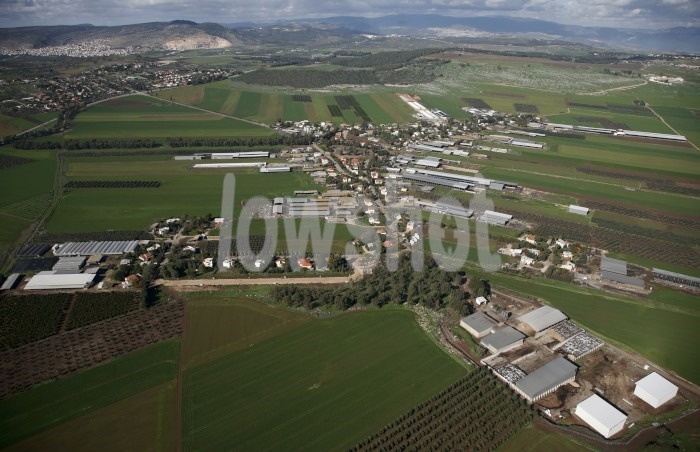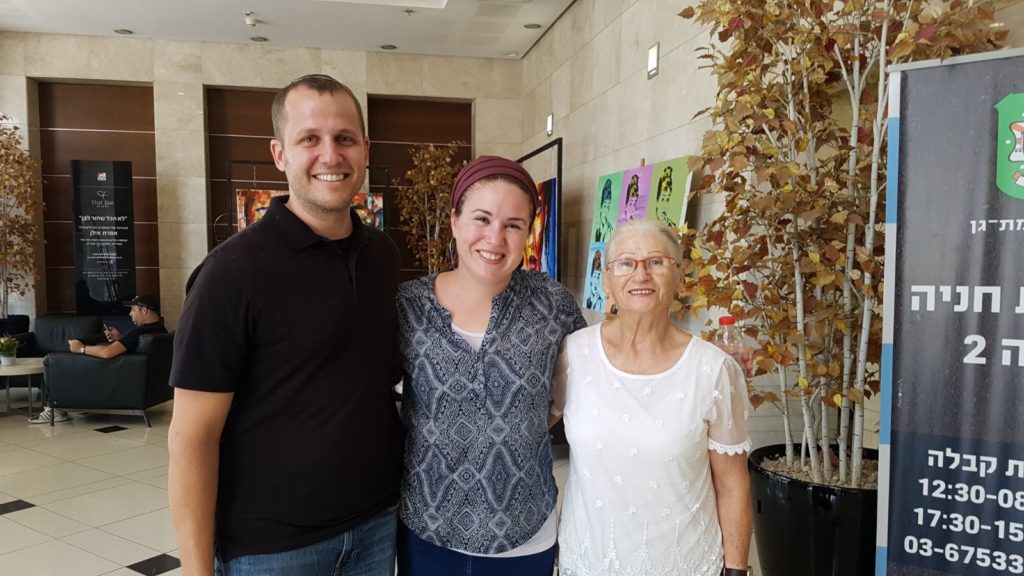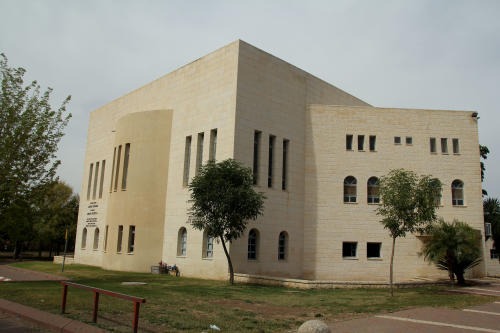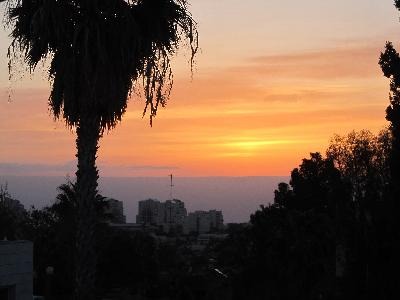We all have stories of discovering “blessings in disguise,” where discouraging news turns out fortuitous in ways unexpected. Such was the market crash of 2008, which resulted in massive layoffs, Ira’s included. He had been working in the Ramat Gan bursa (diamond center) for a number of years. His company naturally had to do some belt-tightening, and Ira found himself free to seek new ventures. It was an anxious and uncertain time for many, the Weissmans included.
His is an entrepreneurial spirit, thank God, and after a number of interesting but unsuccessful ideas (among them a promising-sounding baby stroller importing business, and a short-lived company called the Widow’s Mite, involving the sale of ancient coins to Christians), he found his calling back in the diamond world. Ira has built an online business that is entirely nomadic. All the man requires is an internet connection, and he’s set. At the time, though, before diamonds.pro was a glimmer in his eye and those other venture ideas were percolating, we started looking seriously at communities in the north.
The north of the country, both the Galil and the Golan, had always appealed to us. As I wrote in Tribal Lands[ref]Tribal Lands: The Twelve Tribes of Israel in their Ancestral Territories (Renana Press, 2015).[/ref], “It is not only the primal connection to the earth that is part of the human condition; we are also drawn to a particular place because of its qualities, some quantifiable, some nebulously sensed…different parts of the land inspire and resonate in different ways.” For us, the north is broad and expansive, fostering a generous, open spirit among locals and visitors alike. The north is where much of Israel flocks for reprieve from the more congested merkaz, where people can breathe a little more easily and unwind from the tightness of the daily grind.
We were also drawn to the north at the time because we thought of starting a hospitality and tourism business up there. Ira would operate our tzimmerim (guest suites, which is a very popular lodging option in Israel), and I would specialize in guiding the north of the country (I’m a tour guide, licensed as most guides are through the Ministry of Tourism). Our requirements: a community that would be an attractive tourist destination, that would allow for tzimmerim on the property, that had a young and vibrant dati (religious) kehilla, that had at least a few English-speaking families.


We set off to visit the communities that looked promising: Mitzpe Netofa, Hazorim, Hispin, Nov, Yonatan, Avnei Eitan, Moreshet, Bet Rimon. For one reason or another, at the time and with those particular criteria, no one place fit the bill. One community had nothing available for sale, and another, located deep in a valley, had a fantastic property but was sweltering during our November visit (all I could think of was how I would possibly survive a summer in that heat). Some places would only allow for tzimmerim appended to the house and not as separate units, which was unappealing to us from a business and lifestyle standpoint. One moshav had lots that were 750m, quite large and definitely affordable, but wouldn’t be suitable for tzimmerim. Another place had a residence requirement of a year before acceptance into the yishuv; only at that point could a family purchase a lot and begin the very lengthy process of building a home. We decided to look elsewhere in the country, and thankfully settled in the wonderful community of Mitzpe Nevo in Maale Adumim.
(A note: I think that these yishuvim and Moshavim are gems, each one. Each has its own flavor and appeal, and all are still terrifically affordable and intimate. As the government invests more resources into developing infrastructure in the north, and as land availability becomes rarer through natural population growth and immigration, these places will flourish, eventually become more popular options and prices will concomitantly rise. Now’s the time to buy in, while prices are still affordable.) http://www.nbn.org.il/go-north/northern-communities/
Fast forward seven years, and circumstances have changed. The dream of moving to the north hasn’t abated, though the search criteria have been overhauled. The requirement for enough land to accommodate tzimmerim was now not the primary decisor; now the determining factor was sufficient land for farming, and its proximity to the house. (That the community have a strong religious element with numerous kids of all ages and an active Bnei Akiva were critical criteria that haven’t changed; that there be a garin [core] of english speakers was no longer an important factor. More on that later…) This narrowed down the search to moshavim alone.
[Farming has supplanted tzimmerim in our aspirations, a turn which will get its own sustained treatment in future posts, but here’s the gist of what draws us to that lifestyle:
In recent years, we’ve come to realize how removed we are from our basics: land, sustenance, even spirit. Modern life has us sitting in front of our computers, commuting in our cars, typing frantically on our phones, scrolling through endless messages and updates. In the most ironic of turns in this hyper-connected world, we acutely feel the distance from our overarching goal: connectedness. We can both now easily articulate that what we seek from our move to the north is groundedness, a rootedness and assuredness in our relationship to the earth to which we all belong, a “unique relationship between human and the field that must outlive him, forever…The earth, adama, is the name of our species, adam, just as “human” is drawn from humus, meaning ‘earth.’ If we lose sight of that, we lose all connection to ourselves and to life….”[ref]R’ Matis Weinberg, Frameworks: Genesis, 100-101.[/ref] The ideas of sustaining ourselves through our land, and of connecting more deeply to kedushat ha’Aretz through the agriculturally-based mitzvot, lie at the core of this move, and so the search for farmland was the main element.
Yishuvim are “villages,” ranging in size from a few dozen families to thousands of people. Moshavim generally indicate more of a collective — one is a chaver (official member) of a moshav, whereas a yishuv is entirely private (though many yishuvim, called yishuvim kehilati’m, do strive for a communal feel). The distinct difference between the two is that moshavim are usually agricultural, and the lots available are much larger and spread out than the neatly-planned tighter yishuv layout. Moshavim often also have a collective element, where at least some of the land is jointly owned.
We narrowed our search to moshavim that had a religious feel (active daily minyan and a snif Bnei Akiva with a good number of kids of all ages was a must) and where the farmland (or at least part of the land) was adjacent to the house. We did look at moshavim me’uravim (mixed religious and secular), but the aforementioned requirements took most of them “out of the running.” Which brings us to Sde Ilan…

Ira: Essentially, our search was backwards. We weren’t looking primarily for a community and then checking housing availability in that place, as most people do. Instead, the focus was on finding available land, and then seeing if the community would suit our family. I looked through yad2 for nachalot/meshekim in the north, and then narrowed the available options based on online descriptions of the moshav. I checked for a few years on a regular basis, though we were just talking about it casually and in the abstract.
There’s also a great site, http://www.romgalil.org.il/, which has an exhaustive list of communities in the north here. It allows you to filter by “type” (Yishuv, Kibbutz, Moshav, etc), area (ie, Lower Galil, Jordan Valley, Western Galil, etc), and “character” (Dati, Hiloni, Mixed, or “Other” – aka Arab).
The descriptions aren’t always 100% reliable. A number of moshavim that were previously considered Dati are now not truly Dati. There are some that are listed as Hiloni that are now most definitely Mixed. For many of these moshavim, these descriptions are dynamic and always changing.
Years ago, when I would search through yad2 browsing nachalot, that was more in the realm of fantasy. And when you’re fantasizing, you are, by definition, not thinking realistically. So in those days, I would tell myself that of course we’d be open to living just about anywhere – it doesn’t have to be a Dati moshav. But once this search became practical, and we visited a few moshavim listed on this site as Mixed, we realized we needed a place that would be self defined as Dati. It’s not that we’re looking for a closed atmosphere – quite the opposite is true, in fact. All Jewish life in the north, we have found, is far more open minded than it is in the Mercaz.
Most of the places categorized as Mixed were once Dati, but have since had their passion for mitzvot kind of peter out over the years. This isn’t an atmosphere we wanted to be in.
If you limit your search to truly Dati moshavim with significantly-sized nachalot in the north, you’re left with a fairly short list. If you only consider places with a critical mass of youth for your kids to be friends with, your list gets even smaller (Nov, maybe Avnei Eitan, Sde Ilan, maybe Meron, perhaps a few others I don’t know about). If you take only moshavim that actually have a nahala for sale at the moment, a few more drop off consideration (it’s very very rare for nahalot to go up for sale in most of these places). A critical element, obviously, is that the price has to be realistic. We once saw a nahala for sale in Nov, which we would have definitely otherwise considered, but the price was astronomical. And finally, a wish, but not a hard requirement, was to find a moshav where the agricultural land is adjacent to the residential land (this is much more the exception to the rule).
All of those factors combined pretty much left Sde Ilan as the only real option, so we focused our search on the nachalot available there. Though we considered three different nachalot in Sde Ilan, we were strongly drawn to one in particular.

Next up: “We Cleared the Land With Our Own Hands”: What It Means to Buy a Nahala from a Founding Family





